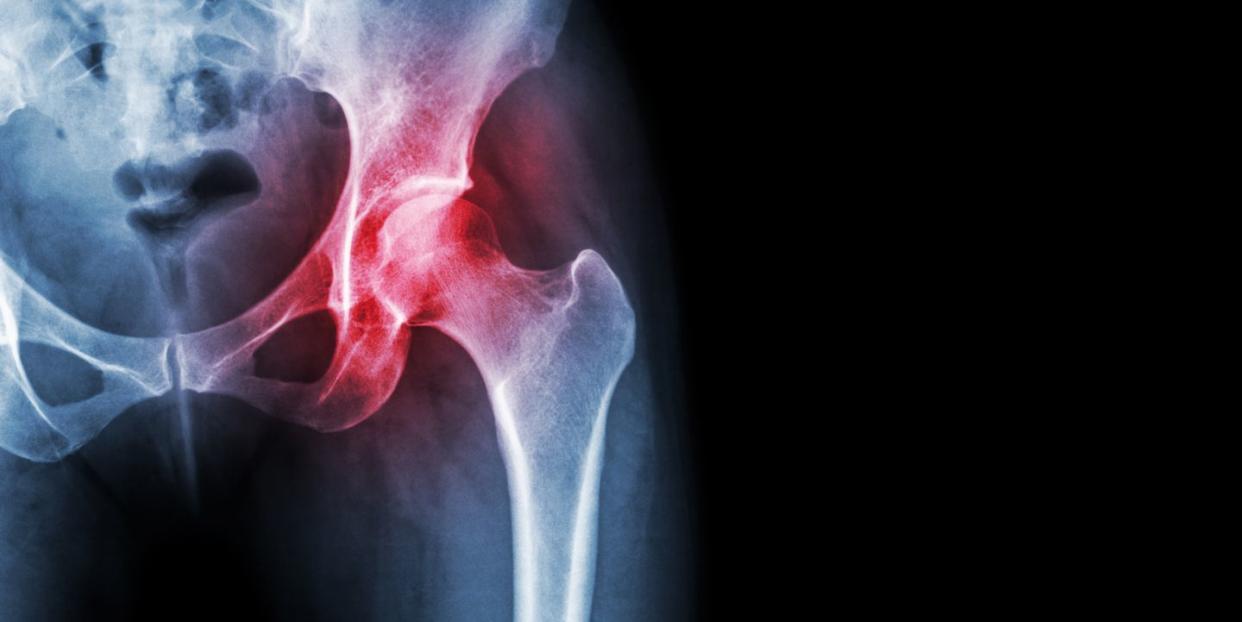Here’s How a Chiropractor Can Help Relieve Your Nagging Hip Pain

The hip is one of the central weight-bearing joints in the human body, so pain here can throw your whole body off kilter. Discomfort may be caused by physical trauma, like a fall, or by an underlying medical condition. Chiropractic (meaning “to be done by hand”) is a treatment that uses manual adjustment techniques on the spine to help with both, says Robert A. Hayden, D.C., Ph.D., F.I.C.C., proprietor of Iris City Chiropractic Center in Griffin, GA, and spokesperson for the American Chiropractic Association. Nearly half of Hayden’s patients who are over 60 have hip complaints. Here, he explains how chiropractic can get the ball (and socket) rolling again.
First, what is chiropractic?
You might be surprised to learn that it’s one of the largest and most regulated health care professions. Chiropractic focuses on musculoskeletal and nervous system disorders and how they affect your health. It’s often used for headaches or pain in the neck, back, or joints. In a 2015 industry-funded study, patients who underwent chiropractic for spinal, hip, or shoulder pain reported less pain four months later than those who saw M.D.’s. A bonus: Their medical costs were also lower.
How can a chiropractor help with hip pain?
Doctors of chiropractic (D.C.’s) use a variety of techniques, including manual adjustments, exercises, electrotherapy, ultrasound, cold laser, and massage on knots in muscles. One of the most common procedures we perform is spinal manipulation, or chiropractic adjustment, which restores joint mobility when we manually apply a controlled force to joints that have become restricted. In many cases, we can adjust the hip joint using a painless drop-table technique: The D.C. lightly thrusts the bone in a way that triggers a mechanism on the table the client is resting on to drop half an inch, and gravity assists in moving the bone. This opens the joint, which creates motion and relieves pain. Deep ultrasound on surrounding muscles, infrared sauna to heat connective tissue, and exercises or stretches can also help.
OK, what is the course of treatment like?
During the first session, we usually take your medical history and do a physical exam and any necessary imaging. Chiropractic care is typically noninvasive, and though you could experience mild discomfort, you will likely feel better and function more fully afterward. Many conditions can be corrected in a single visit. Chronic conditions may require multiple sessions and regular exercises, and it can take two or three weeks to start seeing results.
How can I get the most out of chiropractic?
Be very thorough with your history—think of yourself as a mystery novel that needs to be unfolded in detail. Write down your meds and significant points of your medical history. Information about prior injuries, athletic activity, and any impacts of your job on the hip are especially important. Explain whether pain radiates and where it goes as well as what makes it feel better or worse. Tell your D.C. about your daily routine and how the condition affects your ability to function. These things are important, because our goal is to restore your function.
This article originally appeared in the November 2020 issue of Prevention.
Like what you just read? You’ll love our magazine! Go here to subscribe. Don’t miss a thing by downloading Apple News here and following Prevention. Oh, and we’re on Instagram too.
You Might Also Like

